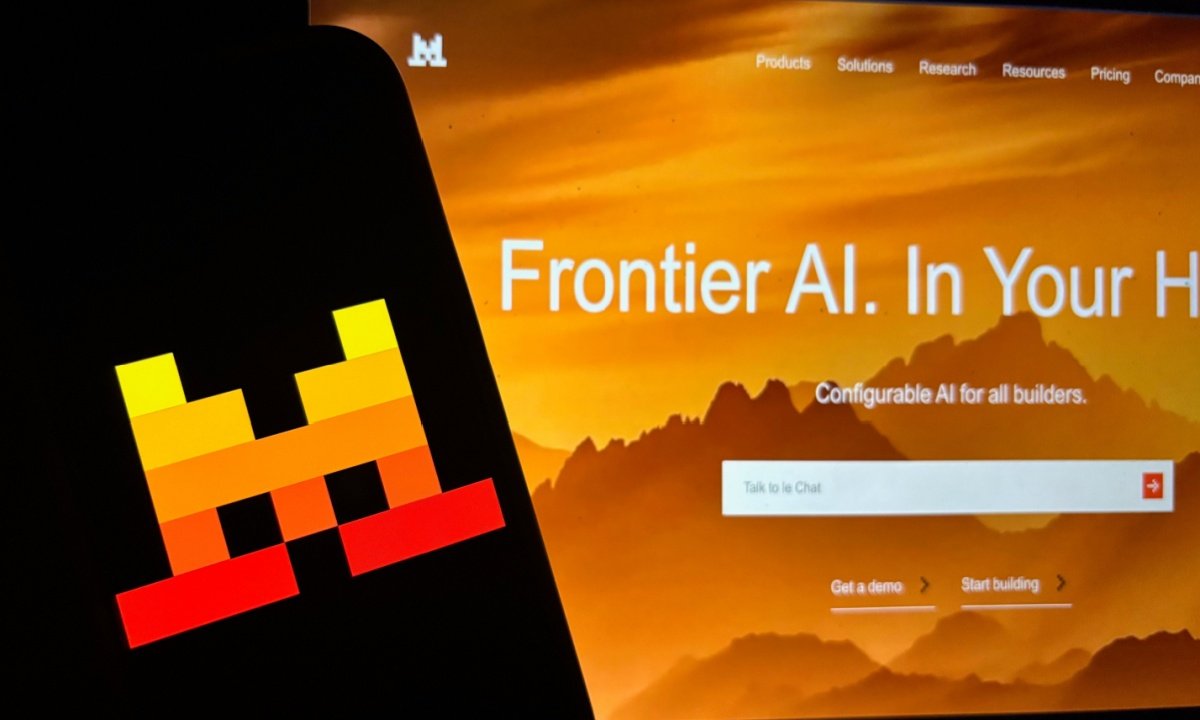AI Research
AI-Designed Proteins Enable Scalable Precision Immunotherapy

Within each individual’s immune system is a unique repertoire of billions of T cells patrolling the body to uncover and eliminate foreign threats. Yet this army is not foolproof and can miss the subtle signs of cancer or viral infection that can lead to advanced disease.
In a step toward enhancing disease detection for scalable personalized immunotherapy, researchers from the lab of Nobel Laureate David Baker, PhD, have now leveraged artificial intelligence (AI) to design highly specific, low immunogenicity protein binders to recognize evasive disease markers for targeted cell killing. The work was published in a new study in Science titled, “Design of high specificity binders for peptide-MHC-complexes.”
![Co-lead authors Julia Bonzanini, Nathan Greenwood, Bingxu Liu, PhD (left to right) [Ian Haydon]](https://aistoriz.com/wp-content/uploads/2025/07/Bonzanini-Greenwood-Liu-Baker-lab-238x300.png)
Diseased cells are identified by T-cell receptors (TCRs) through peptide antigens presented on the cell surface by major histocompatibility complex (MHC) proteins. While therapeutic targeting of MHCs has been effective in specific disease indications within small patient cohorts, this silver bullet has struggled to capture the exponentially large MHC allele diversity required to scale to broader populations.
“During every immune response, we’re rolling dice to see if we’re lucky enough to have a TCR that recognizes the threat,” said Bingxu Liu, PhD, a postdoctoral researcher in the Baker lab, in an interview with GEN. “Using protein design, we can get highly specific binders to these MHCs in a fast and cheap way for a generalized platform.”
The Baker lab’s AI-based pipeline facilitates rapid design and validation of protein binders that can recognize peptides from a diverse array of viral and tumor-associated proteins, including fragments from HIV and the tumor antigen, PRAME. PRAME is a historically challenging target as the atomic details of how the protein gets displayed to the immune system have not been experimentally determined.
Baker, who is a Howard Hughes Medical Institute (HHMI) investigator and the director of the Institute for Protein Design at the University of Washington (UW), was awarded the 2024 Nobel Prize in Chemistry for his work in pioneering AI for protein design. In recent years, his lab has developed RFdiffusion, a diffusion-based AI model that generates proteins from scratch (de novo) to enable broad applications across cancer immunotherapy, enzyme catalysis, and neutralizing snake toxin. Recently, the Baker lab published a new AI framework to drug historically “undruggable” intrinsically disordered proteins.
That’s so specific
The study’s computational approach offers an advance from labor-intensive and time-consuming experimental methods that rely on engineering new TCRs to enhance immune function. TCR screening is additionally limited to the availability of donors with relevant human leukocyte antigen (HLA) alleles for the disease indication, leading to low hit rates and lack of specificity.
The authors generated binders for eleven total target peptide-MHC complexes (pMHCs). Upon activation into chimeric antigen receptors (CARs), designs for eight targets successfully triggered T-cell activation. Two designs enabled targeted killing of human cells bearing disease markers in the lab.
Notably, binders demonstrated impressive specificity with minimal off-target effects to confer low immunogenicity risk. When placed in CAR T constructs, binders triggered T-cell activation for the target peptide, but not for closely related peptides that were only one amino acid away.
Nathan Greenwood, a research scientist in the Baker lab and co-lead author of the study, recalled that the beginnings of the project excelled at designing binders that hit targets, yet tuning the pipeline for high specificity was another milestone.
“We had a really hard time trying to get those binders to be super specific so that they wouldn’t go downstream and be toxic to other cells,” Greenwood told GEN. “Once we started refining our pipeline, we were able to get successful hits on almost all targets to see that the platform was truly generalizable.”
Julia Bonzanini, a graduate student in the Baker lab and another co-lead author on the paper, highlights that this precision immunotherapy project is distinct from the group’s other protein design efforts because of its highly translational focus.
“We eventually want these de novo proteins to end up in humans. That’s the biggest difference from a lot of other projects in the lab that may focus on optimizing a protein to be stable or perform a function,” she told GEN.
Looking ahead, Bonzanini is interested in expanding the work to monomorphic MHCs that have limited variation in their structure within a population, offering a powerful cost-effective path to extend patient reach. She also emphasizes that seeing AI-designed proteins come to fruition in the lab is a technological feat that should not be understated.
“It’s mind–blowing that something you were working on in a computer weeks ago, that was just a bunch of helices and beta sheets, is now in an actual cell doing something that might benefit cancer patients downstream,” she said.
The team plans to launch a company based on the technology, with public details to come at a later date.
AI Research
AI to reshape India’s roads? Artificial intelligence can take the wheel to fix highways before they break, ETInfra

In India, a pothole is rarely just a pothole. It is a metaphor, a mood and sometimes, a meme. It is the reason your cab driver mutters about karma and your startup founder misses a pitch meeting because the expressway has turned into a swimming pool. But what if roads could detect their own distress, predict failures before they happen, and even suggest how to fix them?
That is not science-fiction but the emerging reality of AI-powered infrastructure.
According to KPMG’s 2025 report AI-powered road infrastructure transformation- Roads 2047, artificial intelligence is slowly reshaping how India builds, maintains, and governs its roads. From digital twins that simulate entire highways to predictive algorithms that flag out structural fatigue, the country’s infrastructure is beginning to show signs of cognition.
From concrete to cognition
India’s road network spans over 6.3 million kilometers – second only to the United States. As per KPMG, AI is now being positioned not just as a tool but as a transformational layer. Technologies like Geographic Information System (GIS), Building Informational Modelling (BIM) and sensor fusion are enabling digital twins – virtual replicas of physical assets that allow engineers to simulate stress, traffic and weather impact in real time. The National Highway Authority of India (NHAI) has already integrated AI into its Project Management Information System (PMIS), using machine learning to audit construction quality and flag anomalies.
Autonomous infrastructure in action
Across urban India, infrastructure is beginning to self-monitor. Pune’s Intelligent Traffic Management System (ITMS) and Bengaluru’s adaptive traffic control systems are early examples of AI-driven urban mobility.
Meanwhile, AI-MC, launched by the Ministry of Road Transport and Highways (MoRTH), uses GPS-enabled compactors and drone-based pavement surveys to optimise road construction.
Beyond cities, state-level initiatives are also embracing AI for infrastructure monitoring. As reported by ETInfra earlier, Bihar’s State Bridge Management & Maintenance Policy, 2025 employs AI and machine learning for digital audits of bridges and culverts. Using sensors, drones, and 3D digital twins, the state has surveyed over 12,000 culverts and 743 bridges, identifying damaged structures for repair or reconstruction. IIT Patna and Delhi have been engaged for third-party audits, showing how AI can extend beyond roads to critical bridge infrastructure in both urban and rural contexts.
While these examples demonstrate the potential of AI-powered maintenance, challenges remain. Predictive maintenance, KPMG notes, could reduce lifecycle costs by up to 30 per cent and improve asset longevity, but much of rural India—nearly 70 per cent of the network—still relies on manual inspections and paper-based reporting.
Governance and the algorithm
India’s road safety crisis is staggering: over 1.5 lakh deaths annually. AI could be a game-changer. KPMG estimates that intelligent systems can reduce emergency response times by 60 per cent, and improve traffic efficiency by 30 per cent. AI also supports ESG goals— enabling carbon modeling, EV corridor planning, and sustainable design.
But technology alone won’t fix systemic gaps. The promise of AI hinges on institutional readiness – spanning urban planning, enforcement, and civic engagement.
While NITI Aayog has outlined a national AI strategy, and MoRTH has initiated digital reforms, state-level adoption remains fragmented. Some states have set up AI cells within their PWDs; others lack the technical capacity or policy mandate.
KPMG calls for a unified governance framework — one that enables interoperability, safeguards data, and fosters public-private partnerships. Without it, India risks building smart systems on shaky foundations.
As India looks towards 2047, the road ahead is both digital and political. And if AI can help us listen to our roads, perhaps we’ll finally learn to fix them before they speak in potholes.
AI Research
Mistral AI Nears Close of Funding Round Lifting Valuation to $14B

Artificial intelligence (AI) startup Mistral AI is reportedly nearing the close of a funding round in which it would raise €2 billion (about $2.3 billion) and be valued at €12 billion (about $14 billion).
AI Research
PPS Weighs Artificial Intelligence Policy

Portland Public Schools folded some guidance on artificial intelligence into its district technology policy for students and staff over the summer, though some district officials say the work is far from complete.
The guidelines permit certain district-approved AI tools “to help with administrative tasks, lesson planning, and personalized learning” but require staff to review AI-generated content, check accuracy, and take personal responsibility for any content generated.
The new policy also warns against inputting personal student information into tools, and encourages users to think about inherent bias within such systems. But it’s still a far cry from a specific AI policy, which would have to go through the Portland School Board.
Part of the reason is because AI is such an “active landscape,” says Liz Large, a contracted legal adviser for the district. “The policymaking process as it should is deliberative and takes time,” Large says. “This was the first shot at it…there’s a lot of work [to do].”
PPS, like many school districts nationwide, is continuing to explore how to fold artificial intelligence into learning, but not without controversy. AsThe Oregonian reported in August, the district is entering a partnership with Lumi Story AI, a chatbot that helps older students craft their own stories with a focus on comics and graphic novels (the pilot is offered at some middle and high schools).
There’s also concern from the Portland Association of Teachers. “PAT believes students learn best from humans, instead of AI,” PAT president Angela Bonilla said in an Aug. 26 video. “PAT believes that students deserve to learn the truth from humans and adults they trust and care about.”
Willamette Week’s reporting has concrete impacts that change laws, force action from civic leaders, and drive compromised politicians from public office.
Help us dig deeper.
-

 Business5 days ago
Business5 days agoThe Guardian view on Trump and the Fed: independence is no substitute for accountability | Editorial
-
Tools & Platforms3 weeks ago
Building Trust in Military AI Starts with Opening the Black Box – War on the Rocks
-

 Ethics & Policy1 month ago
Ethics & Policy1 month agoSDAIA Supports Saudi Arabia’s Leadership in Shaping Global AI Ethics, Policy, and Research – وكالة الأنباء السعودية
-

 Events & Conferences4 months ago
Events & Conferences4 months agoJourney to 1000 models: Scaling Instagram’s recommendation system
-

 Jobs & Careers2 months ago
Jobs & Careers2 months agoMumbai-based Perplexity Alternative Has 60k+ Users Without Funding
-

 Education2 months ago
Education2 months agoVEX Robotics launches AI-powered classroom robotics system
-

 Funding & Business2 months ago
Funding & Business2 months agoKayak and Expedia race to build AI travel agents that turn social posts into itineraries
-

 Podcasts & Talks2 months ago
Podcasts & Talks2 months agoHappy 4th of July! 🎆 Made with Veo 3 in Gemini
-

 Podcasts & Talks2 months ago
Podcasts & Talks2 months agoOpenAI 🤝 @teamganassi
-

 Education2 months ago
Education2 months agoAERDF highlights the latest PreK-12 discoveries and inventions





















